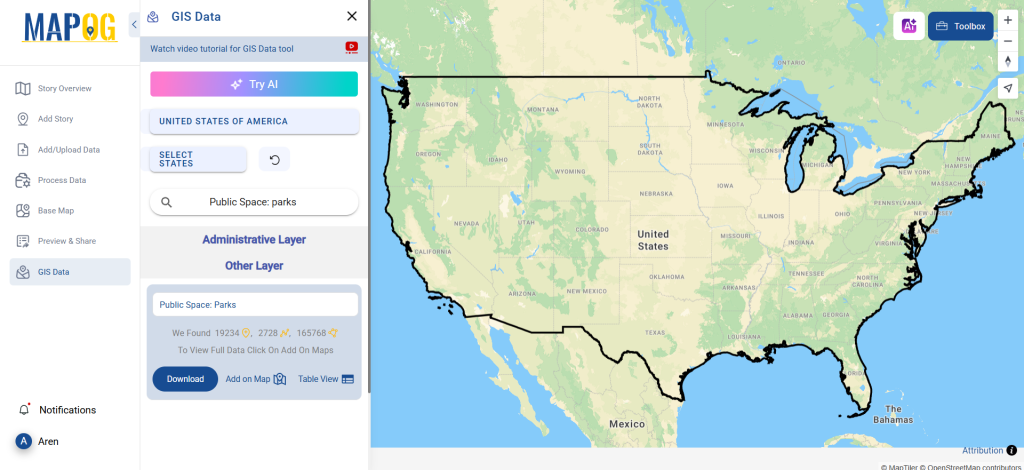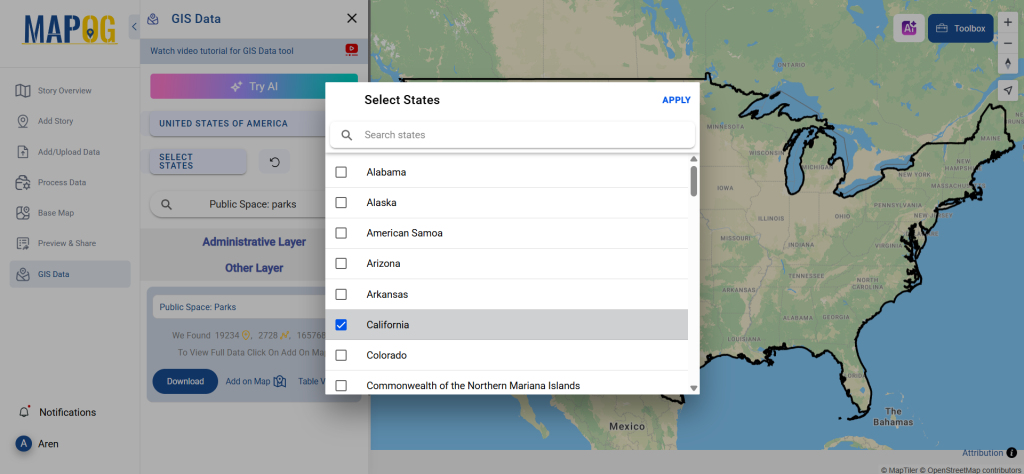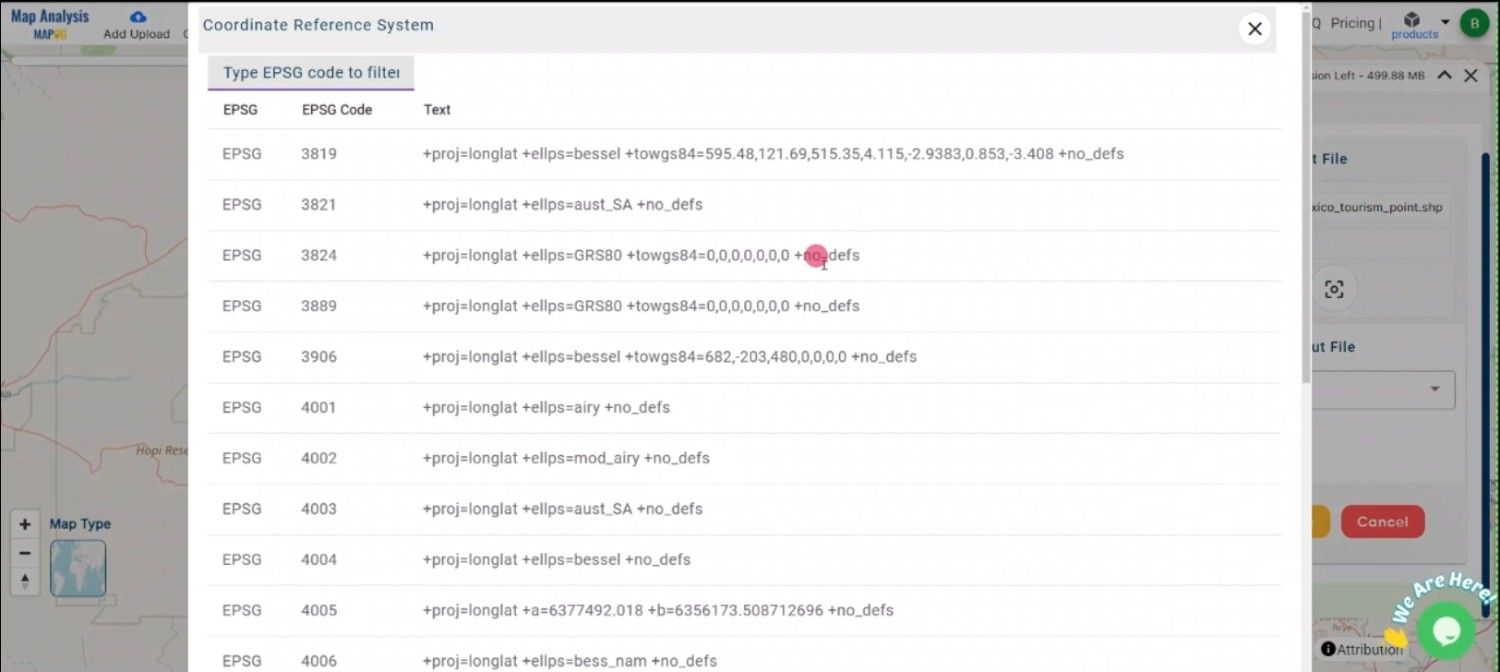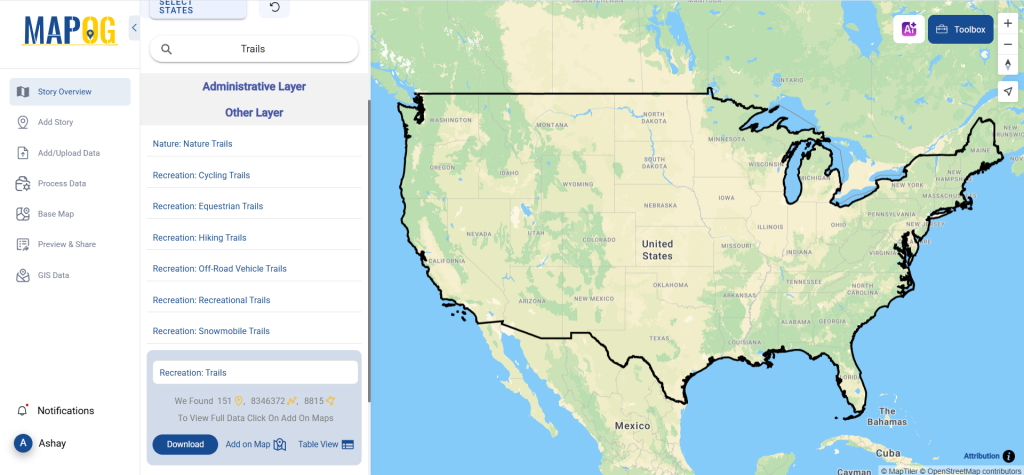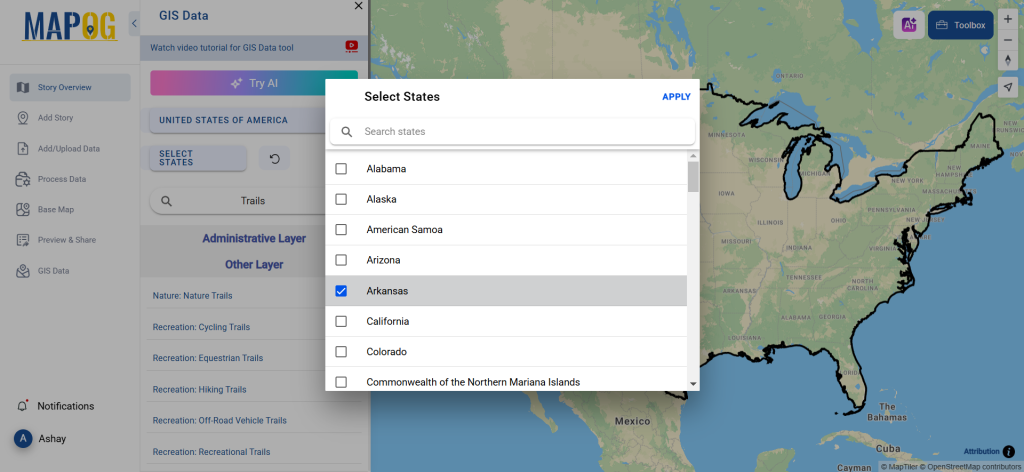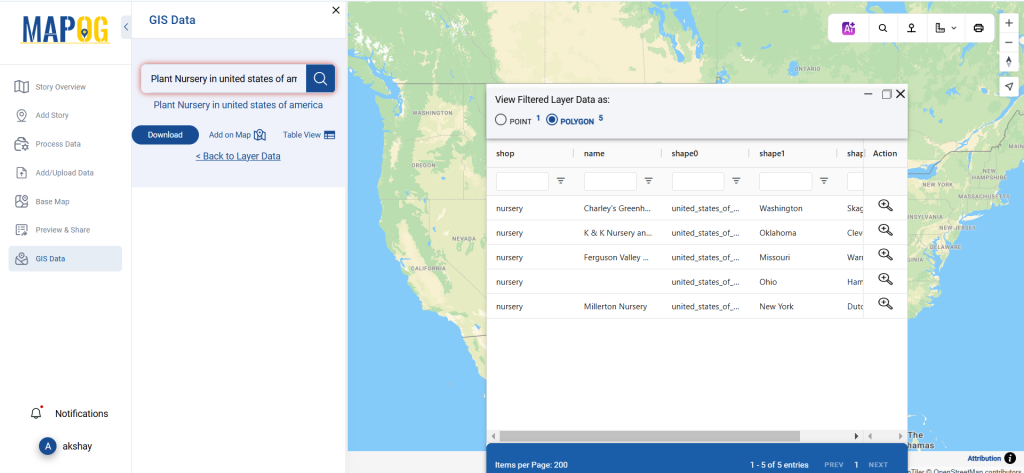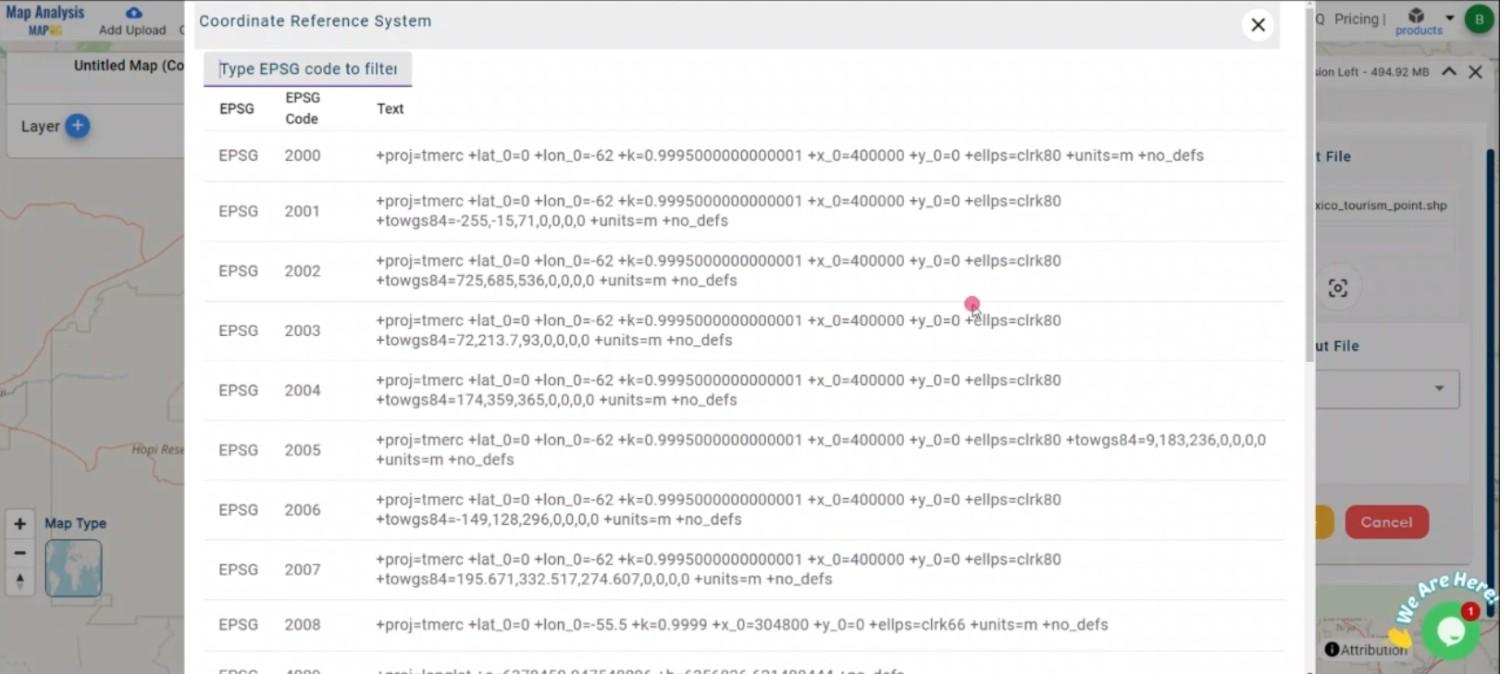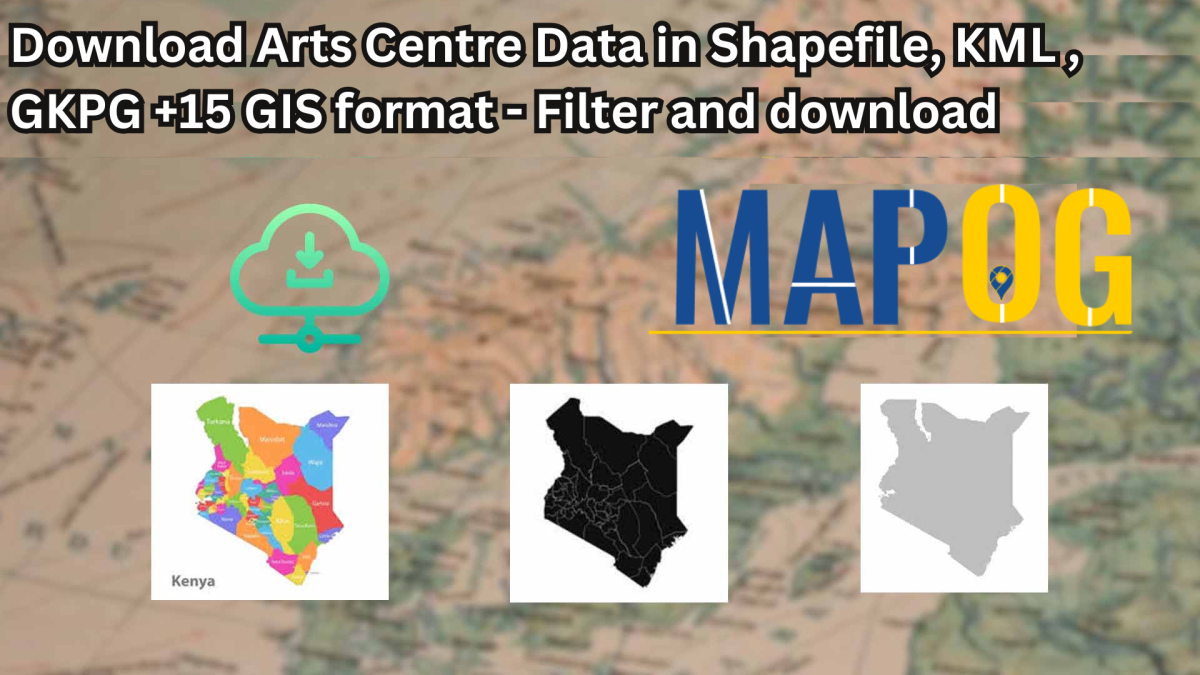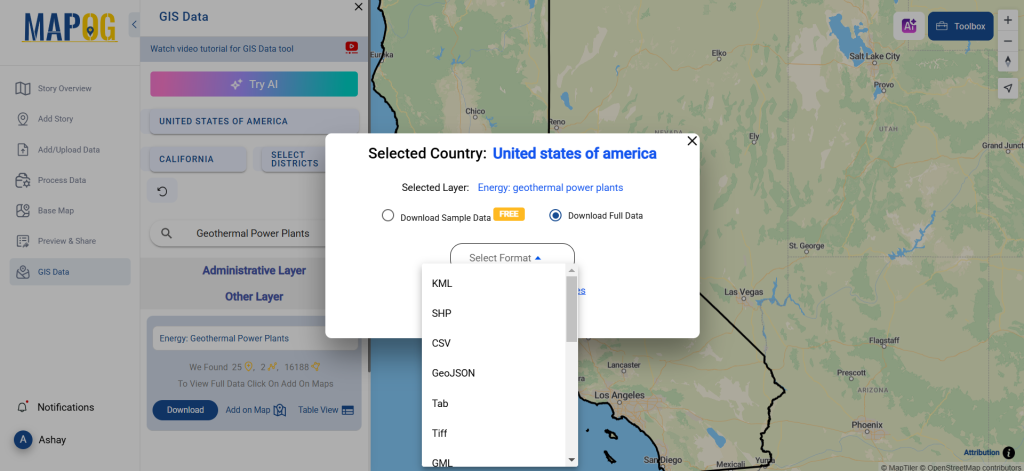Businesses and logistics companies need accurate warehouse location data for efficient supply chain management. Download Warehouse Data seamlessly using GIS Data by MAPOG, a robust and user-friendly platform offering multiple GIS data formats like Shapefile, KML, and MID. Whether for logistics, urban planning, or real estate analysis, MAPOG provides precise geospatial insights for warehouse locations worldwide.
Why Warehouse Data Matters?
Warehouse data includes details such as location, capacity, accessibility, and operational status. This data is crucial for optimizing supply chains, route planning, and decision-making. With MAPOG’s GIS platform, businesses can efficiently access structured warehouse datasets, improving operational planning.
Download Warehouse Data of any countries
Note:
- All data is provided in GCS datum EPSG:4326 WGS84 CRS (Coordinate Reference System).
- Users need to log in to access and download their preferred data formats.
Step-by-Step Guide to Download Warehouse Data
Step 1: Search for ‘Warehouse Data’
Access the GIS Data by MAPOG platform and select your desired country. Use the search layer feature to find the “Warehouse Data” layer. The system provides warehouse locations in multiple formats, allowing for detailed spatial analysis.

Step 2: Utilize AI-Powered Search
Use the Try AI feature in the top-left corner. Simply enter the required warehouse data and location, and the AI tool will instantly fetch the most relevant results, saving time and effort.

Step 3: Apply Filters for Precision
MAPOG offers filtering options to narrow down data by state, district, or specific warehouse types. This ensures users get precise, relevant data, avoiding unnecessary clutter in large datasets.

Step 4: Overlay Data on a Map
The Add on Map feature enables users to visualize warehouse locations on a GIS map interface. This function helps identify spatial patterns, aiding in supply chain logistics, distribution network optimization, and market research.

Step 5: Download the Warehouse Data
Click Download Data to get the dataset. Choose between a sample dataset or the full version. Select the preferred format, including Shapefile, KML, MID, GeoJSON, CSV, DXF, SQL, GPX, and more. Accept the terms and conditions before initiating the download.

Conclusion
MAPOG’s GIS Data platform makes it simple to Download Warehouse Data in various formats, enabling precise geospatial mapping for logistics, urban planning, and supply chain management. With an extensive warehouse location dataset, businesses can streamline operations, reduce costs, and optimize distribution networks. Explore MAPOG today and enhance your GIS data experience!
With MAPOG’s versatile toolkit, you can effortlessly upload vector and upload Excel or CSV data, incorporate existing layers, perform polyline splitting, use the converter for various formats, calculate isochrones, and utilize the Export Tool.
For any questions or further assistance, feel free to reach out to us at support@mapog.com. We’re here to help you make the most of your GIS data.
Download Shapefile for the following:
- World Countries Shapefile
- Australia
- Argentina
- Austria
- Belgium
- Brazil
- Canada
- Denmark
- Fiji
- Finland
- Germany
- Greece
- India
- Indonesia
- Ireland
- Italy
- Japan
- Kenya
- Lebanon
- Madagascar
- Malaysia
- Mexico
- Mongolia
- Netherlands
- New Zealand
- Nigeria
- Papua New Guinea
- Philippines
- Poland
- Russia
- Singapore
- South Africa
- South Korea
- Spain
- Switzerland
- Tunisia
- United Kingdom Shapefile
- United States of America
- Vietnam
- Croatia
- Chile
- Norway
- Maldives
- Bhutan
- Colombia
- Libya
- Comoros
- Hungary
- Laos
- Estonia
- Iraq
- Portugal
- Azerbaijan
- Macedonia
- Romania
- Peru
- Marshall Islands
- Slovenia
- Nauru
- Guatemala
- El Salvador
- Afghanistan
- Cyprus
- Syria
- Slovakia
- Luxembourg
- Jordan
- Armenia
- Haiti And Dominican Republic
- Malta
- Djibouti
- East Timor
- Micronesia
- Morocco
- Liberia
- Kosovo
- Isle Of Man
- Paraguay
- Tokelau
- Palau
- Ile De Clipperton
- Mauritius
- Equatorial Guinea
- Tonga
- Myanmar
- Thailand
- New Caledonia
- Niger
- Nicaragua
- Pakistan
- Nepal
- Seychelles
- Democratic Republic of the Congo
- China
- Kenya
- Kyrgyzstan
- Bosnia Herzegovina
- Burkina Faso
- Canary Island
- Togo
- Israel And Palestine
- Algeria
- Suriname
- Angola
- Cape Verde
- Liechtenstein
- Taiwan
- Turkmenistan
- Tuvalu
- Ivory Coast
- Moldova
- Somalia
- Belize
- Swaziland
- Solomon Islands
- North Korea
- Sao Tome And Principe
- Guyana
- Serbia
- Senegal And Gambia
- Faroe Islands
- Guernsey Jersey
- Monaco
- Tajikistan
- Pitcairn
Disclaimer : The GIS data provided for download in this article was initially sourced from OpenStreetMap (OSM) and further modified to enhance its usability. Please note that the original data is licensed under the Open Database License (ODbL) by the OpenStreetMap contributors. While modifications have been made to improve the data, any use, redistribution, or modification of this data must comply with the ODbL license terms. For more information on the ODbL, please visit OpenStreetMap’s License Page.
Here are some blogs you might be interested in:
- Download Airport data in Shapefile, KML , MIf +15 GIS format – Filter and download
- Download Bank Data in Shapefile, KML, GeoJSON, and More – Filter and Download
- Download Railway data in Shapefile, KML, GeojSON +15 GIS format
- Download Farmland Data in Shapefile, KML, GeoJSON, and More – Filter and Download
- Download Pharmacy Data in Shapefile, KML, GeoJSON, and More – Filter and Download
- Download ATM Data in Shapefile, KML, MID +15 GIS Formats Using GIS Data by MAPOG
- Download Road Data in Shapefile, KML, GeoJSON, and 15+ GIS Form
 Geographic Information System is a system intends to capture, Store, manage, manipulate, analyze the data.
Geographic Information System is a system intends to capture, Store, manage, manipulate, analyze the data. 

